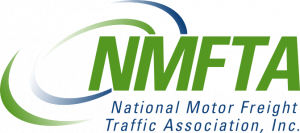SCAC Codes – Unveiling the Mysteries I: Your Ultimate Guide
SCAC Codes – If you’re involved in the transportation and logistics industry, you may have come across the term SCAC code. In this comprehensive guide, we will explore the intricacies of SCAC codes, their significance in the shipping world, and provide valuable insights to help you understand and navigate this vital component of the supply chain.

The Foundation of SCAC Codes : The Standard Carrier Alpha Code, commonly known as SCAC code, is a unique identifier assigned to transportation companies engaged in various modes of freight transportation. These four-letter codes, recognized and regulated by the National Motor Freight Traffic Association (NMFTA), serve as a standardized method for carrier identification. Each SCAC code is unique to a specific carrier and provides essential information, allowing shippers, freight forwarders, and other stakeholders to identify and track carriers accurately.
Understanding SCAC Codes SCAC codes, short for Standard Carrier Alpha Codes, are unique identifiers assigned to transportation companies, commonly used in North America. These codes help identify carriers, freight forwarders, and other entities involved in the shipping process. We’ll dive into the structure and format of SCAC code, explaining how they play a crucial role in facilitating smooth communication, documentation, and tracking of shipments.
Importance of SCAC Codes Delving deeper into the significance of SCAC codes, we’ll explore the benefits they offer to carriers, shippers, and other stakeholders. From streamlining logistics operations to facilitating accurate freight billing and enhancing visibility, SCAC code play a pivotal role in ensuring efficient supply chain management. We’ll highlight real-world examples and success stories that demonstrate the practical implications of utilizing SCAC code effectively.
Obtaining a SCAC Code In this section, we’ll outline the process of obtaining a SCAC code for your organization. We’ll explain the application procedure, eligibility criteria, and the entities responsible for assigning SCAC code. Additionally, we’ll provide tips and recommendations to streamline the application process and increase your chances of acquiring a SCAC code efficiently.
SCAC Codes and Regulatory Compliance Compliance with transportation regulations is paramount for carriers and logistics providers. We’ll discuss how SCAC code are integrated into various regulatory requirements, such as customs documentation, hazardous materials handling, and security protocols. Understanding the role of SCAC codes in regulatory compliance will help you navigate these obligations more effectively.

Best Practices for SCAC Code Management To optimize the use of SCAC codes within your organization, we’ll share best practices for SCAC code management. This section will cover topics like maintaining accurate records, updating SCAC code information, coordinating with trading partners, and leveraging technology solutions for efficient SCAC code management. Implementing these best practices will streamline your operations and enhance overall supply chain efficiency.
Reliable Tracking and Visibility : The ability to track shipments and provide real-time visibility is crucial in today’s logistics landscape. SCAC code play a pivotal role in this aspect, as they enable carriers and logistics service providers to associate specific shipments with their respective SCAC code. This association ensures accurate tracking information, allowing stakeholders to monitor the movement of goods throughout the supply chain. By leveraging SCAC code for tracking purposes, businesses can enhance transparency, proactively manage logistics operations, and promptly address any potential issues or delays.
Conclusion : SCAC codes are the backbone of effective communication and documentation in the transportation industry. By understanding their purpose, obtaining the right codes, and adhering to best practices, you can harness the power of SCAC code to optimize your logistics operations, improve compliance, and achieve seamless coordination within the supply chain.